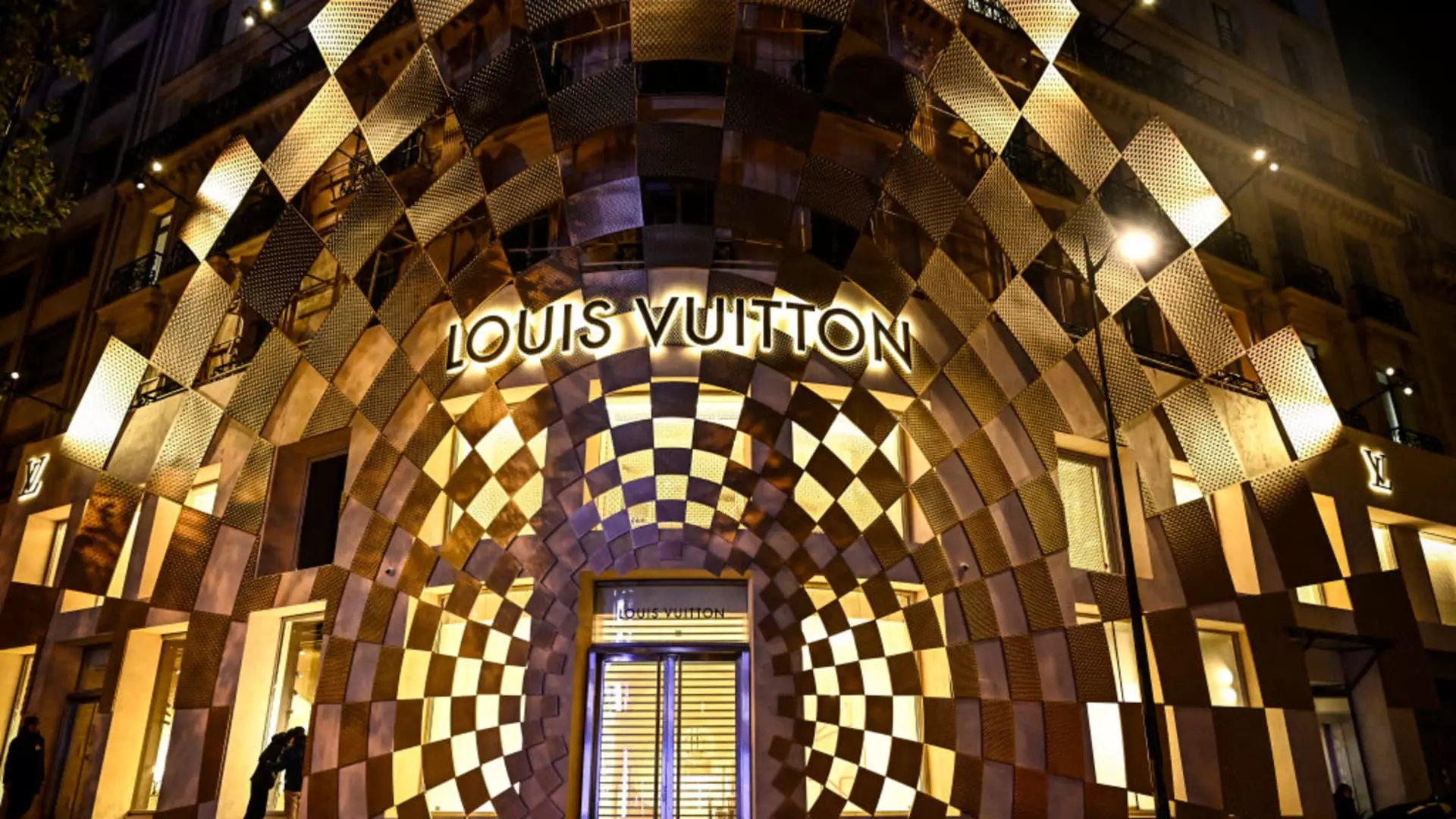LVMH Moët Hennessy Louis Vuitton, the world’s largest luxury conglomerate, has recently raised eyebrows in the financial markets, particularly with its annual report for 2024. While the reported revenue of 84.68 billion euros ($88.27 billion) surpassed analysts’ expectations of 84.38 billion euros, the market response has been notably bearish. This retreat in stock value, with a significant drop of 6.42% shortly after the results were announced, underscores growing skepticism around the luxury sector’s recovery trajectory.
Despite the overall revenue exceeding forecasts, LVMH’s performance was notably heterogeneous across its different business segments. The organic growth of merely 1% compared to the previous year raises questions about the strength and sustainability of consumer demand. Specifically, the company faced declines in its crucial fashion and leather goods and wines and spirits divisions, which are pivotal to its brand identity and profitability. Analysts have observed that while the overall outlook for the luxury goods sector seemed promising, LVMH’s results painted a more nuanced picture, suggesting that pressures are far from alleviated.
The luxury market is under scrutiny, particularly in light of recent performances from competitors like Richemont and Burberry. Richemont, for instance, celebrated its “highest ever” quarterly sales during the festive season, setting a high benchmark that, according to consumer discretionary analyst Mamta Valechha of Quilter Cheviot, LVMH failed to meet. This situation emphasizes the competitive nature of the luxury market, where expectations are elevated, and even slightly better-than-expected results can lead to significant stock declines if they fall short of peers.
Geographically, demand has been uneven. While growth has been buoyant in the U.S., Europe, and Japan, the Asia Pacific market, particularly China, has lagged considerably. The significance of this trend cannot be overstated, given China’s pivotal role in the luxury market. As LVMH continues to navigate these regional disparities, it may need to reevaluate its strategies, especially within the Asia Pacific region, to harness growth more effectively amidst a backdrop of economic challenges.
As LVMH’s stock year-to-date remains approximately 14% higher, indicating some resilience, investors are now weighing the implications of its current performance against the larger narrative of luxury recovery. With its recent results serving as a potential bellwether for the luxury sector, the pressure is mounting for LVMH to demonstrate stronger growth amidst an environment rife with economic uncertainties. The luxury industry must not only contend with shifting consumer habits but also adapt to the broader macroeconomic climate that continues to pose challenges.
LVMH’s recent results illustrate the complexities within the luxury sector, highlighting both the opportunities and the significant headwinds that still exist. The next fiscal period will be critical as stakeholders seek clarity on the company’s path forward amidst a fluctuating luxury landscape.

